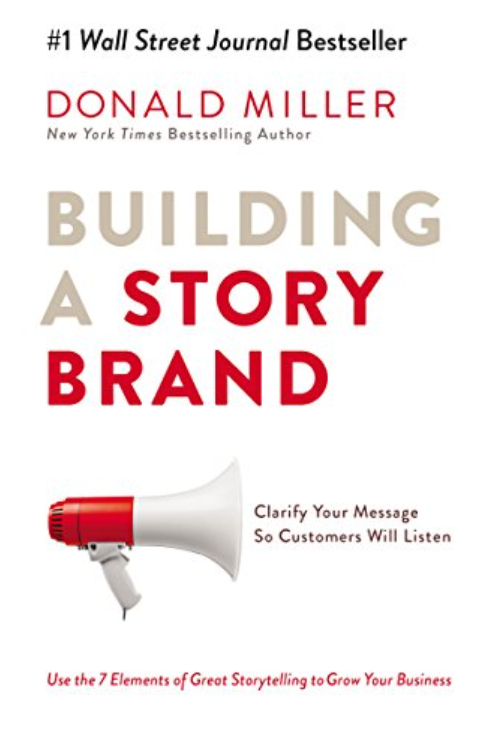Common themes in marketing books are the study of psychology and where people focus their attention. Donald Miller, author of Building A StoryBrand created this book in the same name as his company, StoryBrand, teaching readers everything he has learned owning a full-service marketing company. The premise of this book is about storytelling, and how to curate these stories to make more sales.
This post is a summary of Building A StoryBrand, highlighting the best concepts and ideas we have got from reading it and we are also going to tell you whether it is worth reading the complete book.
Building A StoryBrand Summary
Building A StoryBrand is a book about consumer decisions and how they should influence your marketing techniques. Building A StoryBrand places huge importance on story-telling and how it has played a critical part in our history and continues to be the primary choice to communicate with one another.

Imagination and messages always seem to go hand in hand, for example, think about the last time someone has offered a piece of advice. Most likely, the message was heard, but not put into practice until it was applicable or “to learn the hard way”.
Parables and anecdotes, on the other hand, engage the imagination and puts the listener, viewer, or user in the shoes of the protagonist. It plays on your desire to be the main character of the story and helps you to relate to them. This is why you enjoy movies, books, and listening to others talk about their lives. We are preconditioned to learn if the action is happening to us, and eventually become the hero.
Building A StoryBrand’s best ideas summarized
Here are the top three ideas from Building A StoryBrand that we liked the most.
Your Customer is a Hero
A natural segway into the first section is learning to use the power of storytelling. As will be explained further below, the entire book contains seven principles to improve your sales page and message. This point and the two below it contain a great structure that applies the three main points of a story.
The first of which is focusing on the potential customer as the hero to the story. The best way to do this is to describe their pain points and vilify them to seem larger than life. This will be explained more below, but the introduction to a story needs to set the characters and the scene.
Before you can identify the person as a hero, the scene needs to be set filled with hardships, and most importantly hope. The hope aspect comes from the solution that will be provided, which we will speak about in the last point of this section.
Humans tend to relate to stories with heroes, even if they don’t feel that they are in their shoes. The power of imagination comes to play and can view the path undertaken.
Pain Points Are The Villain
If you sit down and think about the elements of a good story, the protagonist needs to triumph over something. Recall the last time you listened to someone talk about their day or engaged in small talk, did it thrill you? excite you? most of us don’t enjoy small talk because they recap points in the day or speak about seemingly obvious things. Instead, thinking about a co-worker, influencer, or friend regaling you with a tale of an adventure, such as a vacation or relationship drama would make you want to listen.
The best authors for fiction novels always employ this tactic. A story cannot be a story if the hero does not go through obstacles and hardship. Readers will always be shocked and disappointed when a surprise twist occurs after the hero finally gets what they want, but will keep reading anyway. There is a difference between what people say they want and what they need, there will always need to be something to overcome and become stronger from.
Pain points are the villain. Customers don’t need popcorn, they need a salty and buttery snack to enjoy while watching a movie. Clients don’t need a marketing firm, they need an increase in leads, conversions, and top-line revenue. Website visitors don’t need your product, they need to solve a huge problem and your product JUST happens to be there.
Transformation is The Journey
After the hero has been cheered on through many hardships and oppositions, it is time to reward the reader/viewer by promising a happy ending. Although we enjoy hardship, the eventual success and growth from the opposition are what people crave.
This is where the journey comes to a close, and so does the sale. In this section, Miller explains that you must take your customer on an imaginative journey where the product is in their hands. How does it feel? How does life look like? Are you happier? These questions must be addressed with the power of storytelling.
The three main desires are Self-Acceptance, Completeness, and Status. Completeness can usually be achieved through a happy ending. If the hero of the story overcame obstacles and finally found a solution, the story is complete, and happily ever after can be check-marked. Self-acceptance is the way you feel more at ease with yourself. as a species, you constantly compare yourself to one another.
Whenever there is a message that promotes self-acceptance, that buying this product will finally solve that problem, you will be compelled to buy. For example, common insecurity is weight, and a pain point for weight loss is time. An effective method would be to combine weight loss with timeliness and tell the story.
Finally, humans are hierarchical beings. We crave status, recognition, and attention. This is also why social media is prevalent in society.
Luxury brands have this one common insecurity in mind when creating products, if scarcity is created for a product that is in high demand, and further made expensively, the owners of such a luxury will be considered high status and powerful. Status shows ample resources and this, in turn, procures respect.
Review of Building A StoryBrand & should you read the complete book?
Building A StoryBrand is a book that needs a full read-through to learn thoroughly. All marketers should read this for a perspective on their advertising and messages, and everyone else as a consumer should give this book a read-through to identify behavior patterns and one’s own desires and insecurities.
Donald Miller is also a huge advocate of faith, and this in turn affects his writing style. Due to this, critics may say that more skeptical readers would not be interested. Building A StoryBrand has an impactful message, regardless of its delivery, and should be picked up regardless of personal beliefs.
Summary
Think about the coolest person you know. If you were to describe them with one personality trait, what would it be? Our definition of cool is usually synonymous with a high EQ (emotional quotient) and being charismatic.
Those with high charisma not only can read the room but can bring everyone together with adventurous stories and witty remarks. Improve your charisma today and make more sales, and become a better conversationalist with Building A StoryBrand: Clarify Your Message So Customers Will Listen.

